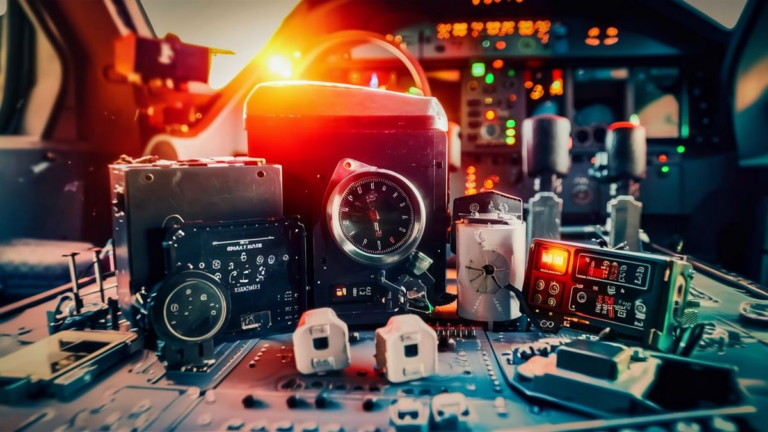In the realm of aviation, the term “black box” is a colloquial expression for the flight data recorder (FDR) and cockpit voice recorder (CVR) installed in aircraft. Despite its name, the black box is typically painted in bright orange, not black, to enhance visibility and aid in locating the device in the event of an accident.
The decision to paint the black box orange is not arbitrary; it stems from practical considerations aimed at facilitating search and rescue operations. The high-visibility orange color stands out against diverse terrains, including water bodies and debris fields, making it easier for recovery teams to locate these crucial devices.
The Origin of the Term “Black Box”
While the outer casing of the black box is indeed orange, the historical origin of the term “black box” remains rooted in the early design of these recorders. The internal components, which house the critical flight data and cockpit audio recordings, are encased in a sturdy, fire-resistant material. This protective casing is often black, providing insulation and shielding against extreme conditions such as fire, impact, and water immersion.
The black box plays a pivotal role in aviation safety, as it preserves a detailed record of an aircraft’s performance, pilot conversations, and system status during a flight. This information is invaluable for investigators in understanding the sequence of events leading up to an incident or accident.
Key Features of the Black Box
Modern black boxes are equipped with advanced technology to ensure the accurate and comprehensive recording of flight data. The flight data recorder captures a myriad of parameters, including altitude, airspeed, heading, vertical acceleration, and the status of various aircraft systems. Meanwhile, the cockpit voice recorder captures audio from the cockpit, including pilot communications, ambient sounds, and alarms.
These devices are designed to withstand extreme conditions, including high-impact crashes and intense fires. The data stored in the black box provides crucial insights for improving aviation safety standards, identifying potential issues, and preventing future incidents.
International Standards and Regulations
The distinctive orange color of the black box is not just a random choice but is mandated by international aviation regulations. These regulations ensure a standardized approach across the industry, making it easier for search and rescue teams worldwide to identify and retrieve black boxes promptly.
The orange color, officially known as International Orange, is specified by standards such as Annex 6 to the Convention on International Civil Aviation (ICAO). Compliance with these regulations is essential for all commercial aircraft to promote uniformity and enhance the efficiency of accident investigations globally.
In conclusion, the color of the black box in an airplane is orange, a deliberate choice driven by safety and visibility considerations. While the term “black box” may evoke images of a dark, mysterious object, the reality is a highly visible and crucial component in ensuring aviation safety and accident investigation accuracy.
Ensuring Black Box Durability
Beyond its distinctive color, the black box’s durability is a critical aspect of its design. The outer orange casing is not merely for visibility; it serves as the first layer of protection. The internal components, encased in a sturdy black material, are engineered to withstand extreme conditions like fire, impact, and water immersion. This robust construction ensures the preservation of crucial flight data even in the most challenging circumstances.
Frequently Asked Questions
| Question | Answer |
|---|---|
| 1. Why is the black box orange? | The orange color enhances visibility for search and rescue operations, aiding in the prompt retrieval of the black box after an aviation incident. |
| 2. How does the black box contribute to aviation safety? | The black box records vital flight data and cockpit audio, offering investigators insights into the sequence of events leading up to an incident. This information is crucial for enhancing safety standards and preventing future incidents. |
| 3. What international standards govern the black box color? | International aviation regulations, such as Annex 6 to the Convention on International Civil Aviation (ICAO), mandate the use of International Orange for black boxes. Compliance ensures uniformity and facilitates efficient accident investigations globally. |
Emerging Technologies in Flight Data Recording
Advancements in technology continue to shape the landscape of flight data recording. Newer black box models incorporate cutting-edge features, such as real-time data streaming and cloud storage. These innovations aim to provide quicker access to crucial information, further improving the accuracy and efficiency of aviation accident investigations.
See also:






